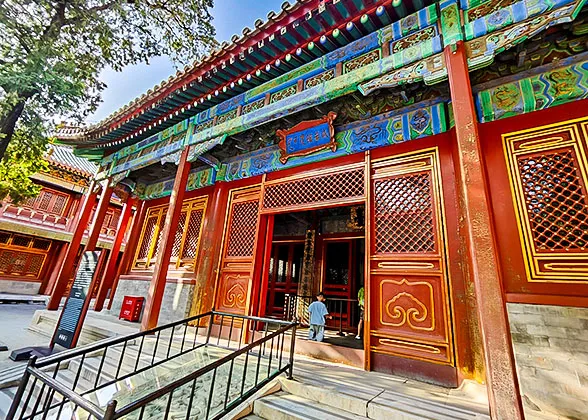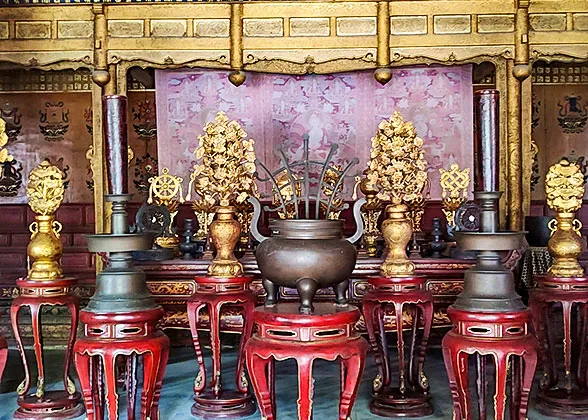Garden of Compassion and Tranquility (Cining Garden)
Located to the southwest of the Palace of Compassion and Tranquility in the Forbidden City, the Garden of Compassion and Tranquility served as a tranquil oasis and venue for Buddhist practices for late emperors’ concubines from 1536 to 1911.
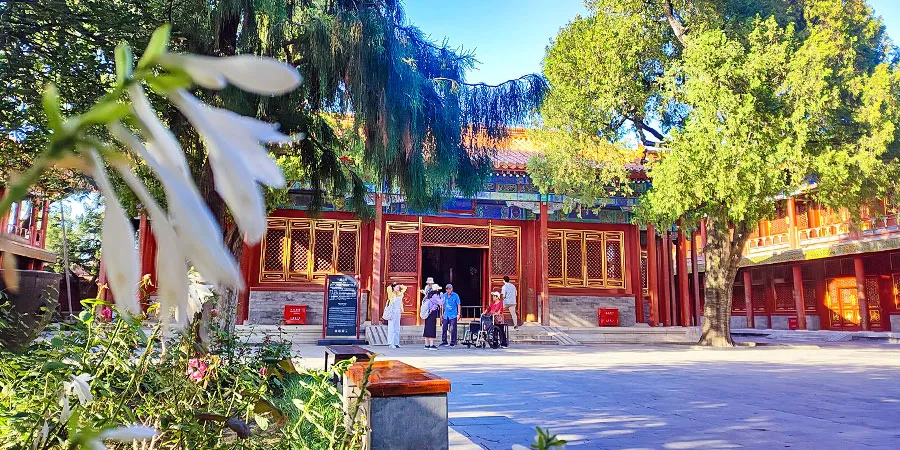 |
| Garden of Compassion and Tranquility |
History of the Garden of Compassion and Tranquility
The Garden was constructed by Emperor Jiajing (1507~1567) in 1536 for his mother, Empress Dowager Jiang (1477~1538).
In 1765, it underwent significant enhancements to cater to the Buddhist practices of Empress Dowager Chongqing (1693~1777), Emperor Qianlong's (1711~1799) devoted mother, which transformed the Garden into a harmonious blend of Buddhist chapel and lush greenery.
Elderly-friendly Layout
The Garden, stretching over 130 meters (426 feet) in length from north to south and 50 meters (164 feet) in width from east to west, boasts a spacious area of 6,800 square meters (73,195 square feet).
However, only one-fifth of the garden was developed, with all eleven structures intentionally clustered in the northern section. This compact layout served two purposes: it created a concentrated viewing zone where aging concubines could enjoy multiple garden views within short walking distance, while the remaining open space maintained flat, unobstructed pathways for their ease of movement.
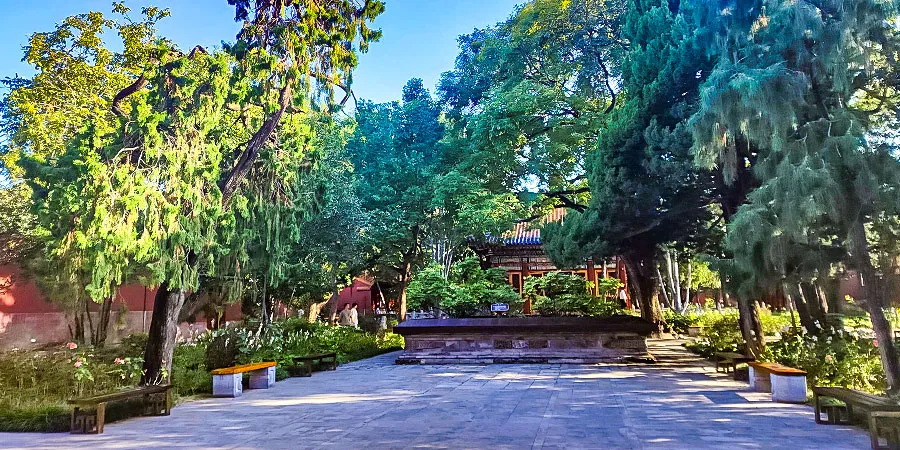 |
| Flat Terrain of the Garden |
Main Structures of the Garden of Compassion and Tranquility
Step into the Gate of Enjoying Natural Beauty (Lanshengmen) and you'll be enchanted by a rockery, the symbol of the Garden's greeting to you. A gravel path guides you through a small grove to the peaceful Pavilion by the Stream.
Pavilion by the Stream
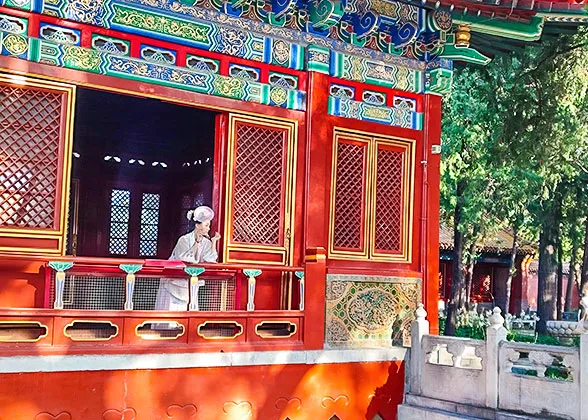 |
| Pavilion by the Stream |
Surrounded by sleek white marble railings, the pavilion’s wide-open windows and doors invite you to soak in the breathtaking view of fish darting and lotus flowers blooming in the pond, from any angle.
Hall of Universal Harmony
In the heart of the northern section of the Garden, facing the Pavilion by the Stream, stands the Hall of Universal Harmony. This structure was once a sacred Buddhist chapel, and it still retains its original charm today.
Step inside, you'll be wowed by the exquisite decorations. Wooden beams and roof frameworks are adorned with vibrant dragon and phoenix paintings, while the ceiling showcases elegant floral patterns, like peonies in full bloom.
Supporting the structure are square columns reminiscent of Tibetan temples. Dominating three walls is a large, stepped Buddhist shrine painted gold, exuding an air of solemnity and mystery with the golden Buddhist statues and offerings displayed on the central table.
|
|
Hall of Divine Dignity
East of the Hall of Universal Harmony stands the Hall of Divine Dignity, featuring seven Buddhist chapels across two floors. The ground floor's central chamber once held a Shakyamuni Buddha statue, surrounded by six rooms adorned with enamel towers and Tangka paintings of 54 Dharmapalas.
Upstairs, each chamber boasts wall-mounted shrines with 122 small bronze Buddhas, totaling 732 across six chambers, with Buddhist scriptures stored in partitioned rosewood cabinets below.
Hall of Auspicious Clouds
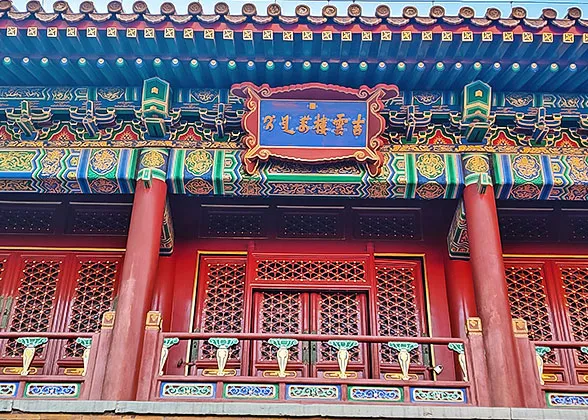 |
| Hall of Auspicious Clouds |
Hall of Benevolent Shade
Nestled the northern tip of the Garden of Compassion and Tranquility, the two-story Hall of Benevolent Shade serves as the Depository of Buddhist Sutras in the Forbidden City.
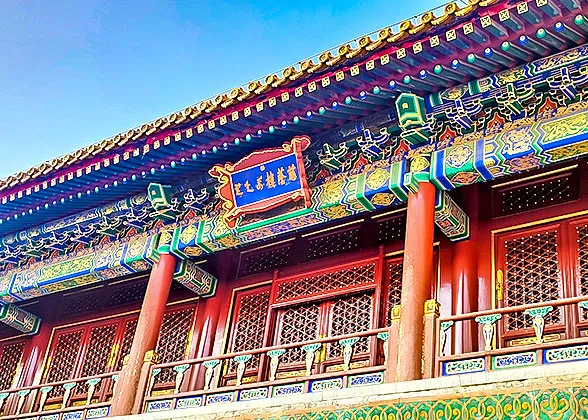 |
| Hall of Benevolent Shade |
Given that only insiders had detailed knowledge of the plates, suspicion naturally fell upon the guards and laborers who had access to them. However, despite years of intensive and rigorous interrogation, the case remained unsolved.
Ultimately, Emperor Xianfeng mandated that officials who had served since 1820 should share the costs of repairing the damaged plates, with descendants footing half for deceased officials. In total, 69 officials were impacted by this ruling.
To prevent future thefts, new rules were put in place, ensuring no such incident has happened again in the Garden of Compassion and Tranquility.
Go northeast to see the Palace of Compassion and Tranquility (Cininggong) and the Palace of Longevity and Good Health (Shoukanggong).
- Last updated on Oct. 09, 2025 by Jally Zhang -
